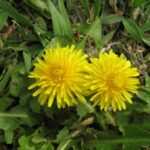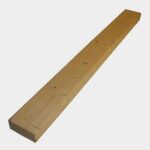Wait until the soil begins to warm as the new season approaches. A good rule of thumb is to keep a watch for dandelion flowers to appear; then it’s time to grow organic potatoes.
Note: For true organic growing, you may need to purchase seed potatoes from a certified organic seed center. Commercially produced potatoes are raised using chemicals, and are therefore not truly organic.
Select an area about 6ft X 5ft in your yard. It is wise to use borders made of lumber or iron to contain the area, although it is not necessary; materials may be unavailable.
-Cover the earth with a thick layer of old newspapers or cardboard or both to prevent weed growth from occurring.
Note: Using newspapers also may also mean your crop is not truly organic. Again, the choice is yours to use a thicker layer of straw instead.
-Spread a layer of composted material over the top of the newspaper or straw. Old lawn clippings which are dry or more straw can be used. You may even sprinkle a layer of worm castings if you have some at your disposal.
-Place your potatoes or pieces of them with eyes, directly onto this thick padding and using pea straw, crop straw or any other which is cheap and readily found, pull it apart and shake over the potatoes to cover them from light. You will need about 1-1 1/2 foot depth of straw.
– Water generously but do not flood the area.
-As soon as the haulms appear(the plant itself) and are about 6-8 inches in height, add more straw to surround the plants and keep the light from penetrating down to the tubers. Continue to do this as the plants grow taller.
-Some small potatoes may grow at the surface and these, if not green, can be picked off and used in any dish which calls for “new potatoes.
-When the haulms have died off and gone dry and brown, it is time to pull back the mulched straw to reveal a bountiful crop of large healthy potatoes. You will find a clean crop of spuds with no dirt on them, and very little rinsing is required before preparation in the kitchen. Crush the dead haulms into the existing mulch and leave for next year’s garden.
It is advisable to practice crop rotation and plant your potatoes in a different place next year. Root vegetables will respond better to this method. If you do so you may wish to plant a wooden stake at the site of each haulm and train the dead foliage up around the stick, then fasten it with a bread tie. The dead foliage will help serve as a natural trellis for other climbing vegetable seed such as peas. Peas or beans will regenerate the soil with valuable nitrogen which the potatoes have used to grow. If you have been growing other vegetables like beets and carrots you may wish to plant peas in that area too, as soon as you harvest your crops.
Pick a few pods to eat, but make sure to turn the dead foliage and the remaining pods containing seeds back into the ground for best soil maintenance.
Taters In Tires:
If you have a bad back or just don’t like using a shovel when you don’t need to, try stacking 3 tires one on top of the other over a pad of newspapers. Fill the tires up to the second level with straw and place your potatoes inside. As they grow, just add another tire and another thick layer of straw, watering each time and once or twice in between. When the plants die, have the kids demolish the tater tower and pick up ail of your nice clean potatoes. Rake up the hay and send to the main vegetable garden or mulch your flower beds with it.
You can give the kids a paintbrush and let them decorate the tires.





